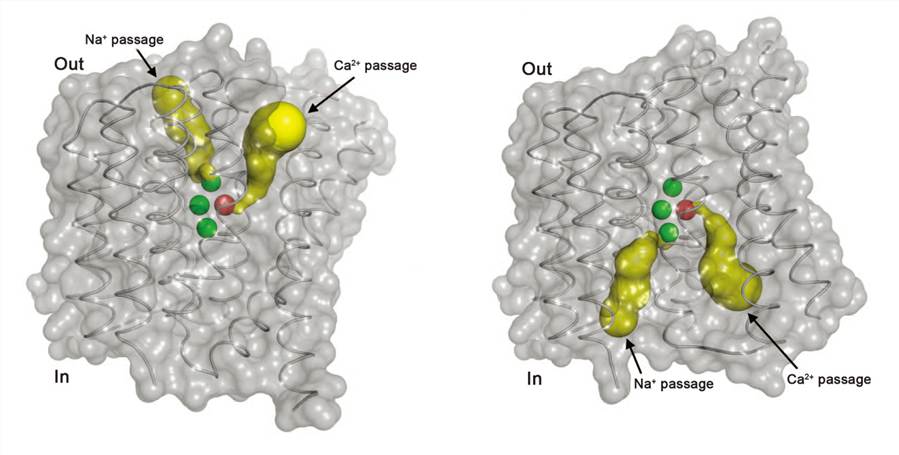Structural Research of Ca(2+):Cation (CaCA) Family
The Ca2+: Cation Antiporter (CaCA) family is a group of membrane transporters that play a vital role in maintaining calcium ion (Ca2+) homeostasis in cells. These transporters exchange Ca2+ with other cations, such as protons (H+), sodium (Na+), and potassium (K+), across the membrane, and are involved in various physiological processes, including muscle contraction, neuronal signaling, and bone formation. Members of the CaCA family maintain cytosolic cytosolic homeostasis in plants and fungi.
X-ray crystallography has enabled researchers to determine the atomic structures of several members of the CaCA family. These structures provide insights into the molecular mechanisms of Ca2+ transport and the key residues involved in ion binding and selectivity. One of the most well-studied members of the CaCA family is the sodium/calcium (Na+/Ca2+) exchangers (NCX), which mediates the exchange of Na+ and Ca2+ ions across the plasma membrane. The crystal structure of NCX has revealed a mechanism, in which the transporter alternates between two conformations to move ions across the membrane. The binding of ions induces conformational changes in the protein, leading to the transport of ions in a specific direction. Another member of the CaCA family, the cation/Ca2+ exchanger (CAX), has also been structurally characterized, it adopts a similar mechanism to NCX, but with a different orientation of the ion-binding sites.
 Figure 1. The outward-inward conformational change of NCX. (Liao J, et al., 2012)
Figure 1. The outward-inward conformational change of NCX. (Liao J, et al., 2012)
| Protein | Organism | Method | Resolution | PDB Entry ID |
| Sodium/Calcium Exchanger (NCX), Lipidic Cubic Phase Crystallization (expressed in E. coli) | Methanocaldococcus jannaschii | X-ray diffraction | 1.90 Å | 3V5U |
| VCX1 Calcium/Proton Exchanger (expressed in Saccharomyces cerevisiae) | Saccharomyces cerevisiae | X-ray diffraction | 2.30 Å | 4K1C |
| H+/Ca2+ Exchanger CAX (expressed in E. coli) | Archaeoglobus fulgidus | X-ray diffraction | 2.30 Å | 4KPP |
| native YfkE (expressed in E. coli) | Bacillus subtilis | X-ray diffraction | 3.05 Å | 4KJS |
Table 1. Structural Research of Ca(2+):Cation (CaCA) Family.
Creative Biostructure offers a range of techniques to determine the 3D structure of proteins, such as X-ray crystallography and cryo-EM. These techniques enable researchers to determine the atomic structure of proteins and gain insights into their molecular mechanisms and interactions. Furthermore, our computational modeling services can help predict the structure and function of proteins based on their amino acid sequences. This can be especially useful for proteins that are difficult to crystallize or for which high-resolution structures are not available.
As a leader in protein structure analysis services, we are committed to advancing structural biology research and providing high-quality services to our clients. Contact us today to learn more about our services and how we can help you with your research.
References
- Liao J, et al. Structural insight into the ion-exchange mechanism of the sodium/calcium exchanger. Science. 2012, 335(6069): 686-690.
- Waight A B, et al. Structural basis for alternating access of a eukaryotic calcium/proton exchanger. Nature, 2013, 499(7456): 107-110.
- Nishizawa T, et al. Structural basis for the counter-transport mechanism of a H+/Ca2+ exchanger. Science. 2013, 341(6142): 168-172.
- Wu M, et al. Crystal structure of Ca2+/H+ antiporter protein YfkE reveals the mechanisms of Ca2+ efflux and its pH regulation. Proceedings of the National Academy of Sciences. 2013, 110(28): 11367-11372.